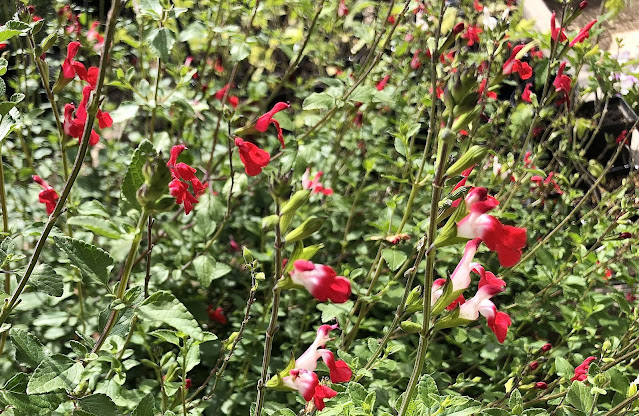
Inventory clearance open only to Friends; new members can join at gate

|
|
Salvia × jamensis
'Hot Lips' is an Arboretum All-Star popular with bees, hummingbirds -- and gardeners. Saturday's sale will have 50 of the plants available. (Photo: Kathy Morrison)
|
Calling all All-Star lovers: This is your last chance this spring to purchase these UC Davis Arboretum favorites direct from the arboretum’s Teaching Nursery.
On Saturday, April 30, the Arboretum Teaching Nursery hosts its final plant sale of the season, a clearance of its spring inventory. The catch? It’s open only to Friends of the Arboretum. Due to construction at the nursery, there are no public sales this spring.
The good news? Shoppers can join the Friends at the gate – and get a welcome gift, too.
All Friends get a 10% discount and one free plant coupon per season as a member appreciation gift. New members also get a free plant coupon.
Sale hours are 9 a.m. to 1 p.m. Saturday. The nursery added thousands of plants including dozens of new varieties to its inventory for this sale, including many native plants. The nursery specializes in water-wise flowering perennials, ground covers and shrubs. Also find an excellent selection of succulents.
To see the inventory in advance, go to: https://arboretum.ucdavis.edu/plant-sales . There's also a new photo gallery of the available plants, viewable here .
The nursery asks shoppers to bring their own boxes, if possible, to take home their new plants.
The Arboretum Teaching Nursery is located on Garrod Drive opposite the Veterinary Medicine complex and small animal hospital on the UC Davis campus. Besides hosting the plant sale, the nursery is also home to beautiful demonstration gardens showcasing the Arboretum All-Stars and other water-wise collections.
For directions and more: https://arboretum.ucdavis.edu .
Comments
0 comments have been posted.Sacramento Digs Gardening to your inbox.
Food in My Back Yard Series
April 1: Don't be fooled by these garden myths
March 25: Fertilizer tips: How to 'feed' your vegetables for healthy growth
March 18: Time to give vegetable seedlings some more space
March 11: Ways to win the fight against weeds
March 4: Potatoes from the garden
Feb. 25: Plant a fruit tree now -- for later
Feb. 18: How to squeeze more food into less space
Feb. 11: When to plant? Consider staggering your transplants
Feb. 4: Starting in seed starting
Sites We Like
Garden Checklist for week of March 30
Your garden doesn’t mind April showers. Get busy now to enjoy those future flowers.
* Get ready to swing into action in the vegetable garden. As nights warm up over 50 degrees, start setting out tomato, pepper and eggplant transplants.
* From seed, plant beans, beets, cantaloupes, carrots, corn, cucumbers, melons, pumpkins, radishes and squash. (Soak beet seeds overnight in water for better germination,)
* Plant onion sets.
* In the flower garden, plant seeds for asters, cosmos, celosia, marigolds, salvia, sunflowers and zinnias.
* Transplant petunias, zinnias, geraniums and other summer bloomers.
* Plant perennials and dahlia tubers for summer bloom.
* Transplant lettuce and cabbage seedlings.
* April is the last chance to plant citrus trees such as dwarf orange, lemon and kumquat. These trees also look good in landscaping and provide fresh fruit in winter.
* Smell orange blossoms? Feed citrus trees with a low dose of balanced fertilizer (such as 10-10-10) during bloom to help set fruit. Keep an eye out for ants.
* Apply slow-release fertilizer to the lawn.